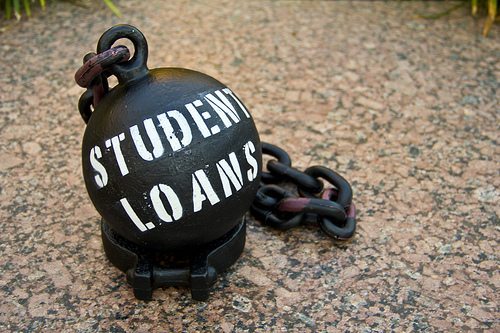Dayton Bankruptcy Law: Discharging Student Loans
Discharging Student Loans: Undue Hardship
 Generally, student loans are not dischargeable in bankruptcy; one of the few debts that categorically remain with a debtor once they have completed their bankruptcy. In the past, some privately funded education loans could be discharged under Chapter 7 bankruptcy. However, with the change of the Bankruptcy Abuse Prevention and Consumer Protection Act of 2005, the definition of a non-dischargeable student loan was expanded, and now includes, “any other educational loan that is a qualified education loan,” as defined by the Internal Revenue Code.
Generally, student loans are not dischargeable in bankruptcy; one of the few debts that categorically remain with a debtor once they have completed their bankruptcy. In the past, some privately funded education loans could be discharged under Chapter 7 bankruptcy. However, with the change of the Bankruptcy Abuse Prevention and Consumer Protection Act of 2005, the definition of a non-dischargeable student loan was expanded, and now includes, “any other educational loan that is a qualified education loan,” as defined by the Internal Revenue Code.
No one should have to read the Internal Revenue Code, so allow me to summarize the definition. A non-dischargeable student loan is a qualified education loan incurred solely to pay qualified education expenses, which are the cost of attendance at a qualified educational institution. Here is a quick break down:
- qualified education loan = loan incurred solely to pay qualified educational expenses.
- qualified educational expenses = cost of attendance at an eligible educational institution.
- cost of attendance = tuition, fees, books, equipment, room and board, and other personal expenses as determined by the school.
- qualified educational institution = a post-secondary school authorized to participate in the U.S. Department of Education Student Loan program.
An exception to this general rule of non-dischargeability is proof of undue hardship.
Generally, to discharge student loans due to undue hardship, a debtor must explain the how payment of the debt “will impose an undue hardship on the debtor and the debtor’s dependents.” The court will apply the Brunner Test, a 3-prong test, to determine dischargeability. Under this test the debtor must show he/she:
- cannot maintain, based on current income and expenses, a “minimal” standard of living for the debtor and the debtor’s dependents if forced to repay the loans;
- additional circumstances exist indicating that this state of affairs is likely to persist for a significant portion of the repayment period of the student loans; and
- has made a good faith effort to repay the loans.
The debtor must show all of these factors by a preponderance of the evidence for the court to discharge their student loan debts. The second requirement, that the hardship is likely to continue, is usually the hardest to prove. In a recent decision, a bankruptcy court said that only a debtor with rare circumstances will satisfy the second prong of the test. Such circumstances include, for example, illness, disability or lack of suitable job skills. Even though discharging student loans is difficult, it is not impossible and sometimes a court will reduce the amount owed without discharging the entire amount.
Do you believe you may qualify to discharge your educational loans in bankruptcy? Contact me, the Ohio State Attorney, David Smith, at (937)-318-1529, to schedule a free in-office or telephone consultation today. Get your fresh start for a new tomorrow!
